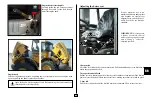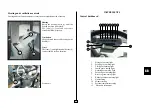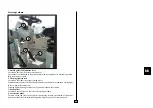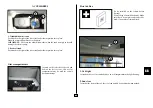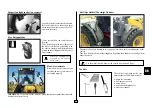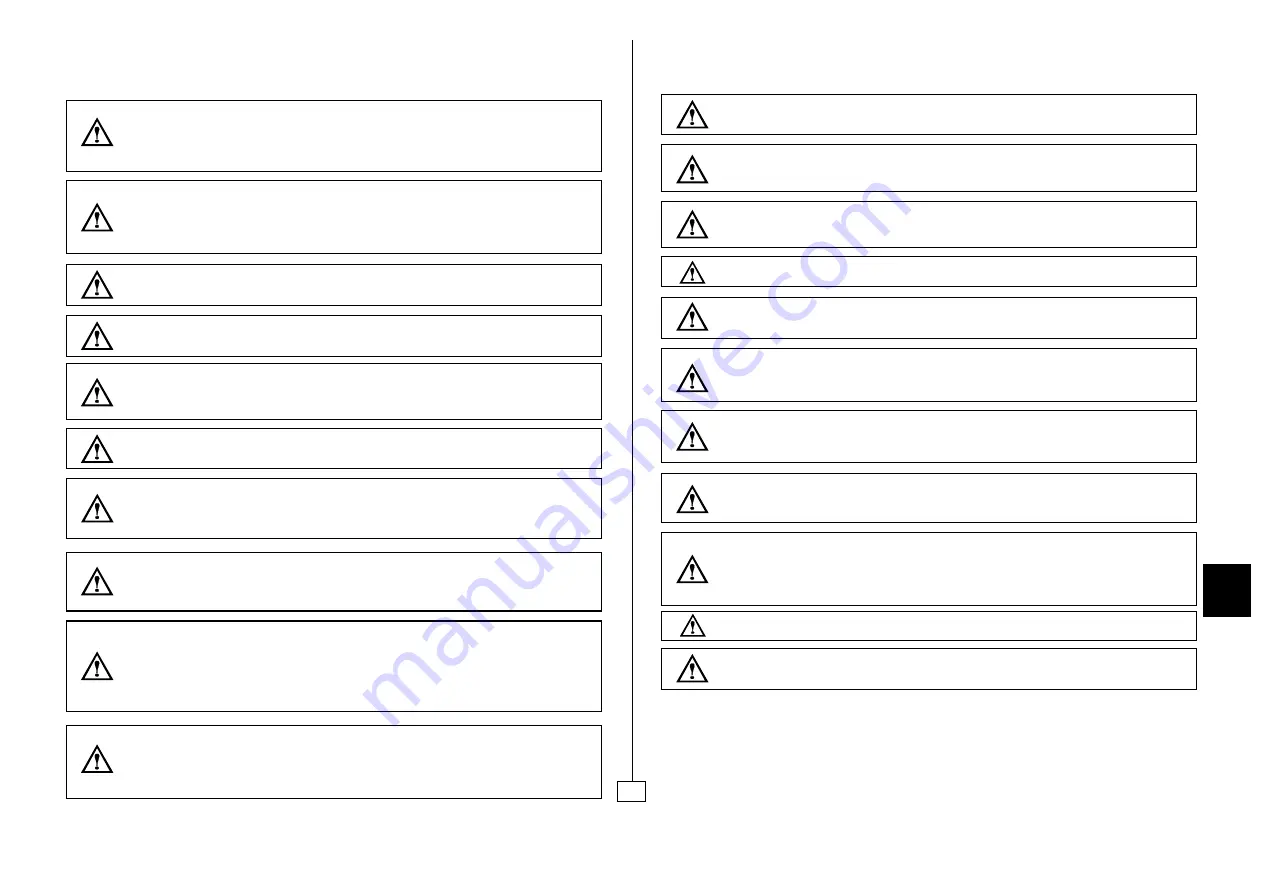
6
GB
Never allow anyone to enter the vehicle work zone. A wrong move by the
driver could cause an accident. Stop all movement until the person has left
the area.
Machine use
When working on a roadside site, use the standard traffic signs, bearing in
mind the machine steering radius. Local legislation will define the number,
type and position of signs and reflectors.
Do not run the engine in a closed space. Always provide adequate
ventilation.
Never authorise anybody to get on the vehicle since a passenger could fall
or cause an accident.
Never operate a loader control or vehicle drive device unless you are
properly seated in the drive seat.
Do not work near live overhead power cables without first ensuring
observance of minimum distances. Less than 57.000 Volt: 3 metres, more
than 57.000 Volt: 5 metres.
Locate pipes/ducts/cabling etc. before digging. Electrical cables, gas mains,
water pipes and other underground works could cause serious physical
injury.
Before manoeuvring the vehicle, take working conditions (slopes, rough
terrain), road conditions and weather conditions into careful consideration.
Behave and drive accordingly.
The max on-road-transfer speed is 32 km/h (20 km/h in Germany). The
max on-site speed is 7 km/h.
Use the controls in sequence to ensure proper machine operation.
When transporting the machine on a trailer position the speed selector at
on-site speed. Keep the loading bucket at least 20 cm from the ground.
Using the digging gear to “sweep” the ground to level dug out material or
push objects (side-on gear stress) is absolutely forbidden.
Stop the engine even during brief pauses.
Never leave the driver’s cab with the engine running.
When getting in and out of the driver’s seat the loading gear controls MUST
categorically be locked in place. NEVER disobey this safety regulation.
Dust, smoke and fog reduce visibility, increasing the likelihood of an
accident. Stop or slow down until visibility is restored.
Never jump down from the machine. When getting out of the cab always
use the footboard and the handholds.
In the event of malfunction or breakdown, immediately set the digging gear
down on the ground, stop the engine and pull the hand brake. Identify the
fault and/or report it: take any necessary measures to prohibit machine use.
All on-road transfers must be effected in forward gear.
Vehicle must be driven only by expert and authorised personnel. For on-
road transfers the drivers must have a regular driving licence (“B” or
upper category); the use of a pivotable headlight is compulsory.
It is forbidden to carry passengers on the vehicle. The vehicle has been
approved for the transport of one person only. It is not allowed to use the
vehicle (bucket, forks, etc.) as a base plate for lifting people.
Should the machine be stopped on a gradient, chock the wheels (law in
certain countries).


















